Wood burner vs open fire: which should you choose?
They both make great additions to the home, but let's find out which comes out on top

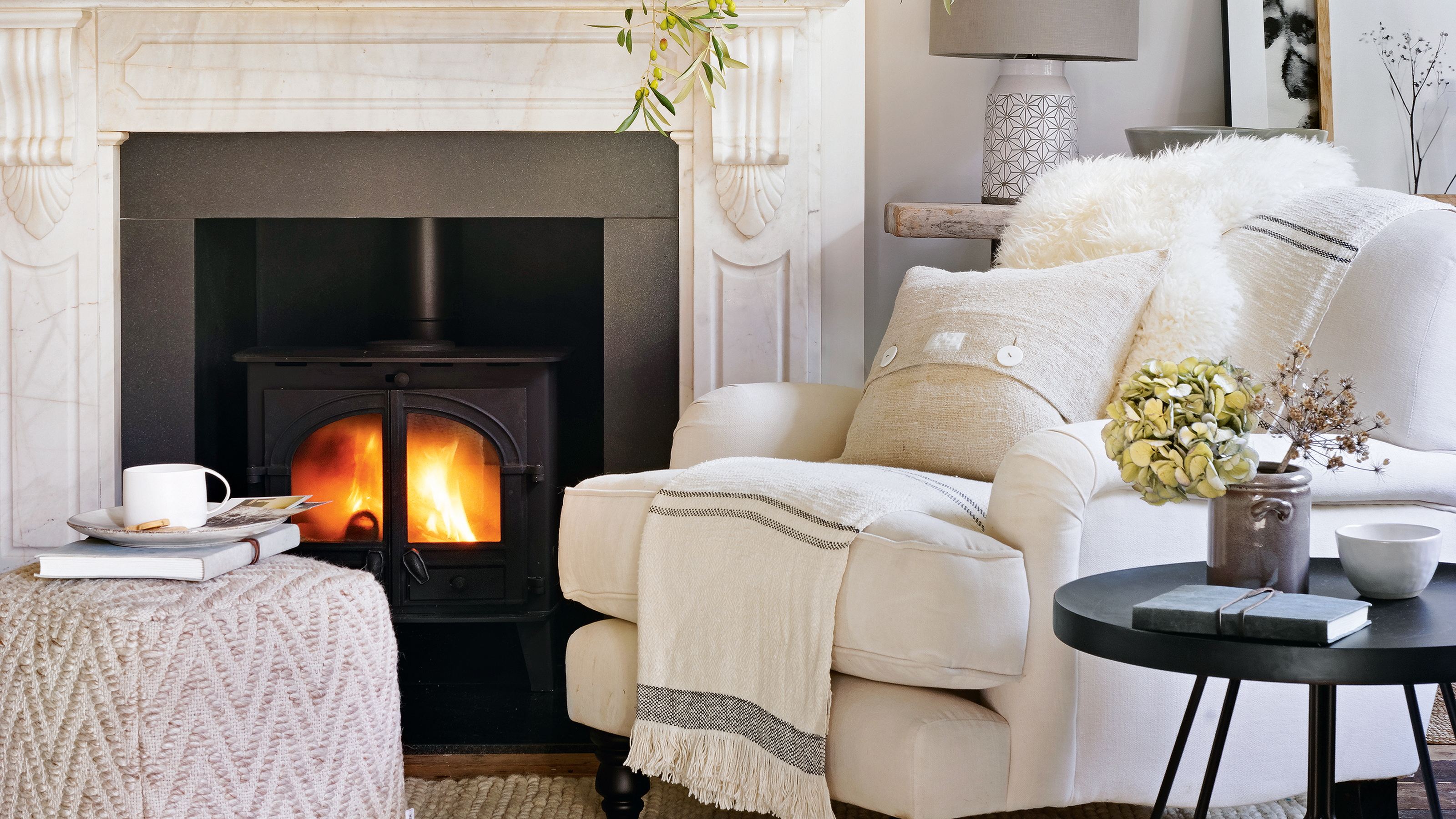
Nothing quite compares to the comforting sound of wood crackling away on a fire, and the warming atmosphere created by lazy flames. Many modern homes are reverting back to traditional fireplace ideas in an attempt to recreate this homely feel, but which is better - wood burners or open fires?
You may already have an opinion on the wood burner vs open fire debate, or you might even be wondering what's the difference between the two. Wood burning stoves have surged in popularity in recent years, thanks to their ability to heat homes efficiently. But open fireplaces also remain a sought-after choice, leaving many people wondering which they should incorporate into their decor.
Well, the experts have opinions in the wood burner vs open fire discussion. We've asked them to measure these two popular heating sources against a variety of factors, including efficiency, eco-friendliness, and maintenance, so you can decide which to invest in.
Wood burner vs open fire
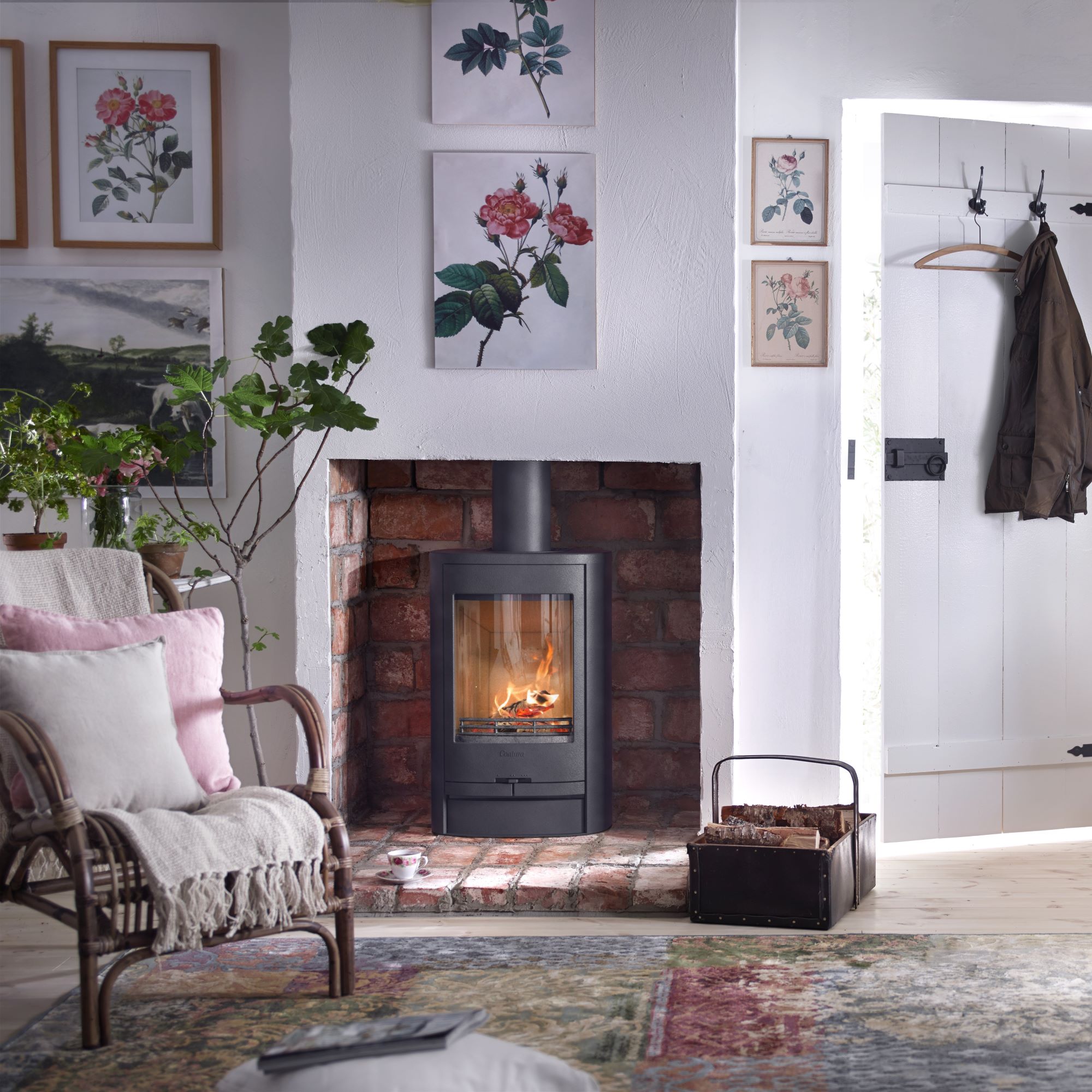
So, which is better: wood burners or open fires? If you're hesitating before diving in to wood burner ideas, having a good understand of the wood burner vs open fire discussion might help you decide which is better for you. Here's everything you need to know.

Phil is managing director of Contura Stoves (UK) Limited, part of the Swedish NIBE AB Group of companies. He has worked in the fireplaces, fires and stoves industry since 1985.
Wood burner vs open fire: what's the difference?

Put simply, an open fireplace is a fire that sits within a grate below a chimney or flue. A wood burner is enclosed in a stove. Both use wood as a fuel source.
Because an open fire isn't contained, a lot of the heat produced from the fuel is lost up the chimney or flue. Wood burners are smaller and more compact in their design, and they're better at projecting heat into the home. Open fires also make the room smokey when lit, because there isn't anything in place to guide the smoke up the chimney like there is with a wood burner.
Modern wood burners can also be installed in homes without a chimney. 'A twin-wall flue system is the go-to solution for wood-burning stove installation in a home without a chimney,' says Joanna Humphreys, Fire and Stove Specialist, Direct Stoves. 'Essentially, this system acts as an artificial chimney, providing a safe exit for the smoke and fumes.'
Sign up to our newsletter for style inspiration, real homes, project and garden advice and shopping know-how
Wood burner vs open fire: which is more efficient?
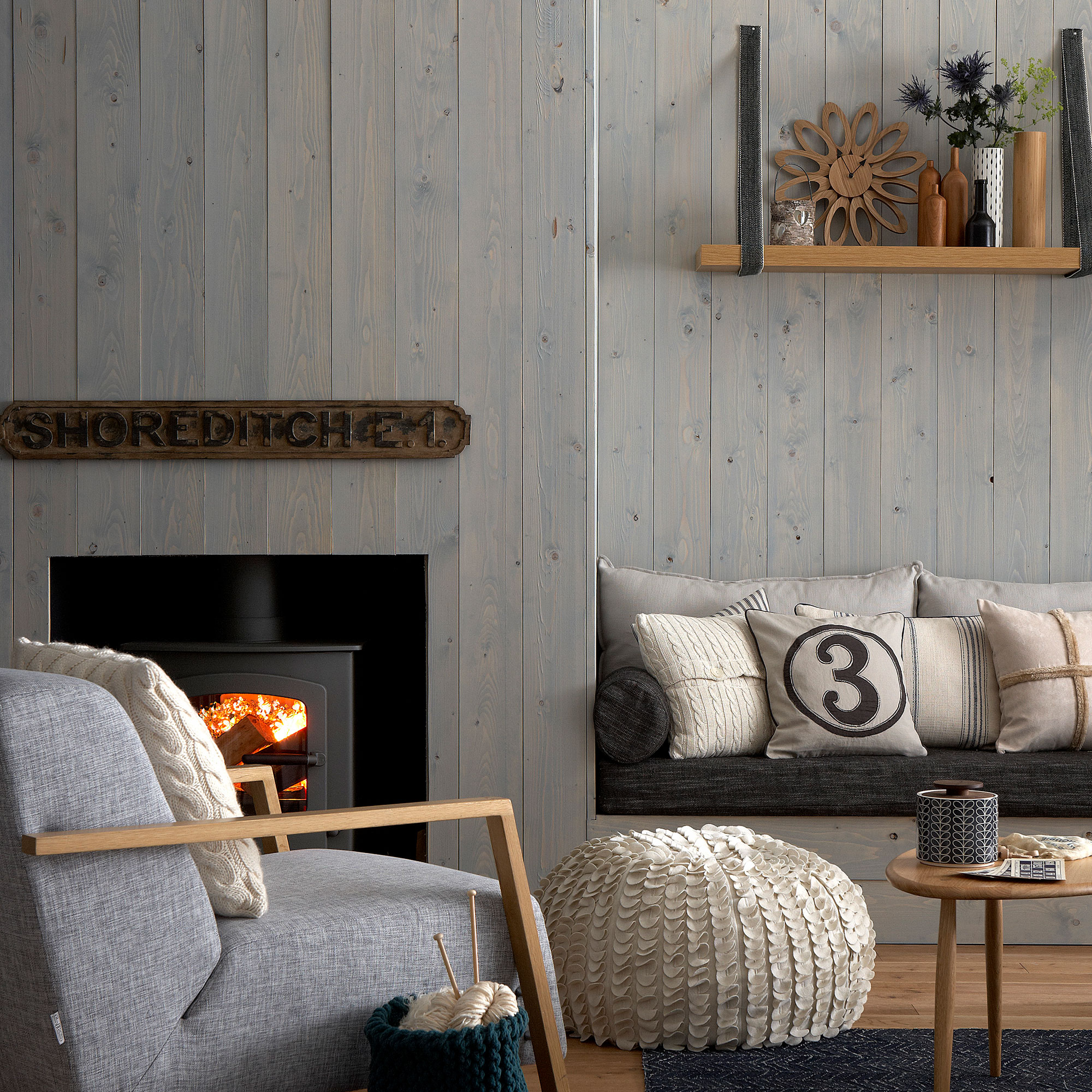
Wood burners are more energy efficient than open fires; they require much less fuel and are better able to keep a house warm. Open fireplaces are actually one of the least efficient ways to heat your home, as around 80% of heat produced disappears up the chimney.
'Just two logs per hour are required to keep a wood burner going, whilst eight logs are needed to burn for an hour in an open fire,' Phil says. 'In total, a wood burning stove is 60% more efficient at heating the home, as heat transfer is convected into the room rather than being lost up the chimney in the case of conventional open fireplaces.'
So if saving energy is important to you, you're probably going to want to go down the route of a wood burner rather than an open fire.
Wood burner vs open fire: which is more eco-friendly?
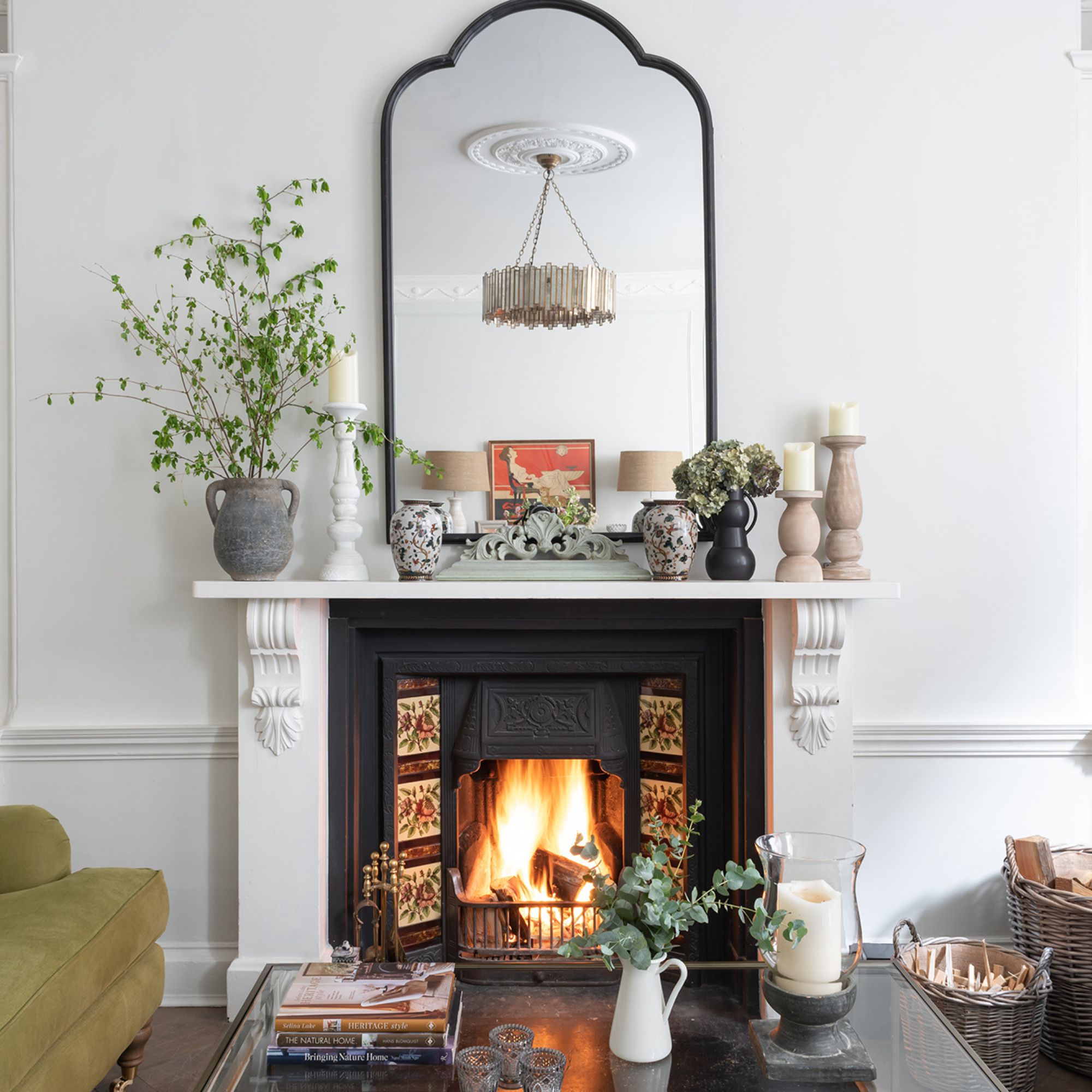
If you're conscious about your carbon footprint, know that wood burners are far more friendly to the planet than open fireplaces. Modern wood burning stoves that comply with EcoDesign regulations reduce emissions by 90% compared to a traditional open fire. A significant statistic that might sway you in the wood burner vs open fire debate.
'Modern wood burners are designed to meet and exceed strict EcoDesign standards,' Joanna from Direct Stoves explains. 'They are built to burn fuel as efficiently as possible and many are now clean-burning and therefore considered carbon neutral, meaning they do not produce more carbon dioxide than is already present in the carbon cycle.'
So aside from heating homes more efficiently, Ecodesign wood burners reduce emissions and burn cleaner, which they means they produce significantly less smoke than open fireplaces as well. While the smokey atmosphere produced by an open fireplace can feel homely and authentic, this isn't the healthiest - or the cleanest - way for us to heat our homes.
Wood burner vs open fire: which is easier to clean?
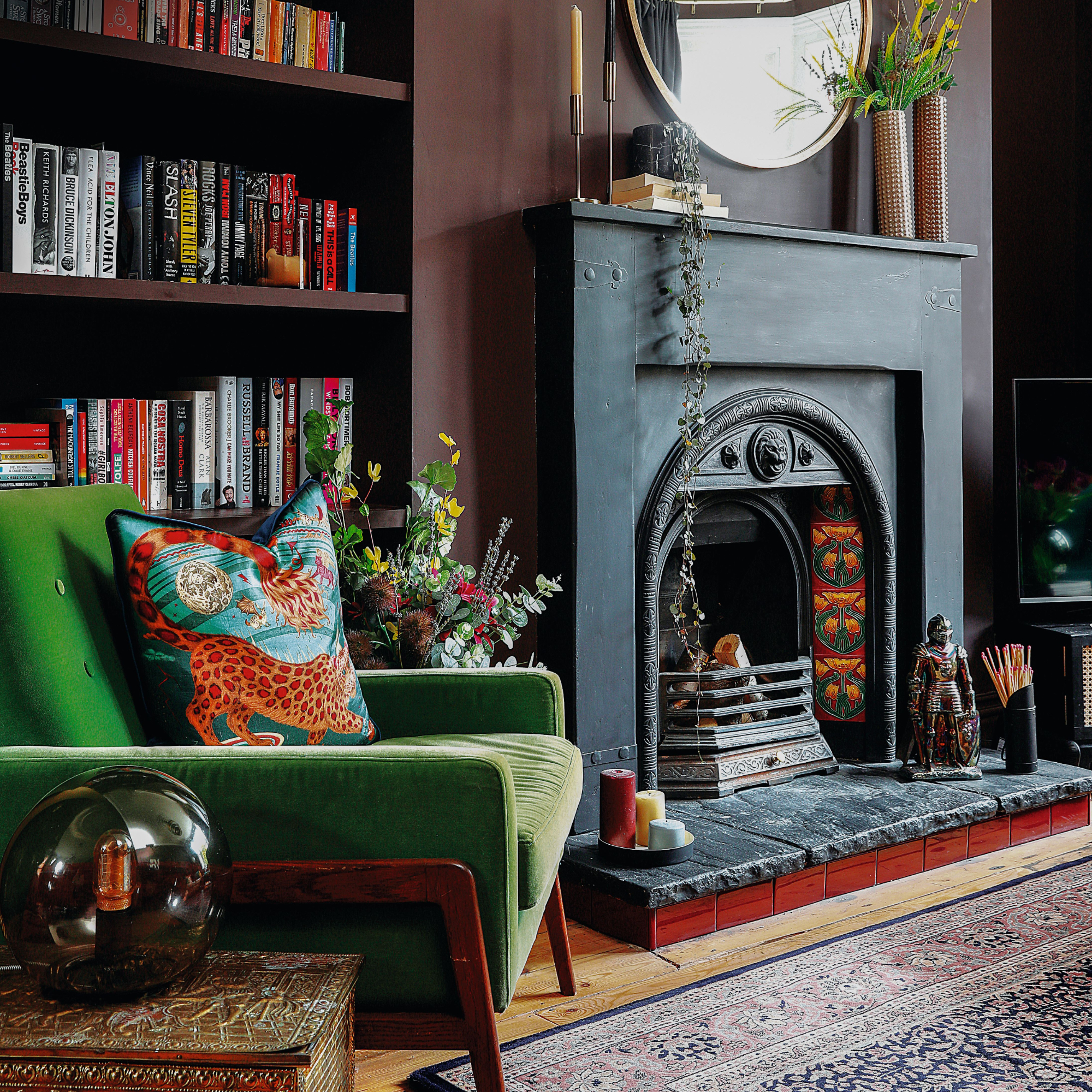
Because the wood is contained within cast-iron casing, wood burning stoves are a lot easier to clean than open fireplaces. After an open fire has been lit, the remnants are often left scattered in the grate, and it can take a lot of sweeping and maintaining to get it looking clean and tidy again.
Wood burning stoves still need to be cleaned in order to burn fuel optimally. 'The stove should be cleaned out regularly to remove excess ash, soot and debris, as this will ensure a more efficient burn and minimise smoke,' says Phil from Contura. 'The chimney, flue and stove should also be swept professionally at least once a year. An annual check is crucial to troubleshoot any issues, check all parts are functioning correctly and remove any soot and blockages that may be affecting the efficiency and emissions of your stove.'
Just make sure you know how to clean log burner glass to keep it in full working order. And for both wood burners and open fires, it's helpful to know how to clean a chimney properly so you can keep on top of maintaining it throughout the year.
The verdict
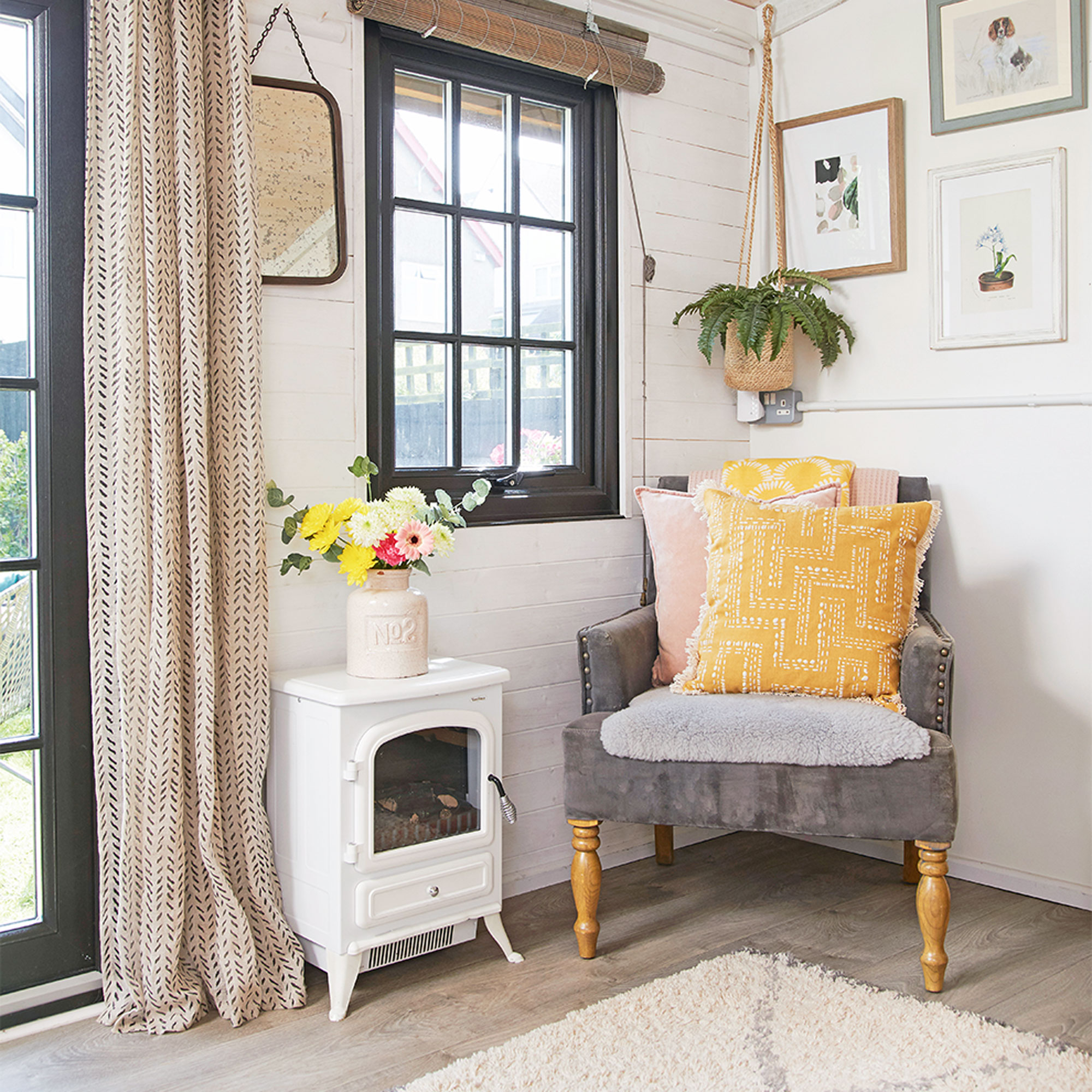
So, which comes out on top in the wood burner vs open fire debate? The experts sit pretty firmly on the side of wood burners, which seem to win in terms of heating efficiency, eco-friendliness, and ease of cleaning.
'A wood burning stove is far more efficient than an open fireplace, using less wood, it is cheaper to run and leads to a better fuel economy,' Phil says. 'To significantly improve both indoor and outdoor air quality, it is strongly advisable to replace an open fireplace with a closed wood burning stove.'
You'll need to burn less wood to start and maintain a fire in a wood burner compared to an open fire. Wood burners are also better at projecting heat into the home, as they're designed to convect heat into the room.
The main draw of open fireplaces is their traditional appeal. The crackle of wood and the smokey atmosphere produced by an open fire is a firm favourite of many, and wood burners don't quite produce the same effect. On the flip side, this does mean that open fires release a lot of smoke into the room, which can lead to poor air quality.
The pros of a wood burner vs open fire stack up, but ultimately, you might decide that you're willing to put up with the drawbacks of an open fireplace - more fuel, more cleaning, and less heat - because of their traditional and homely appeal.
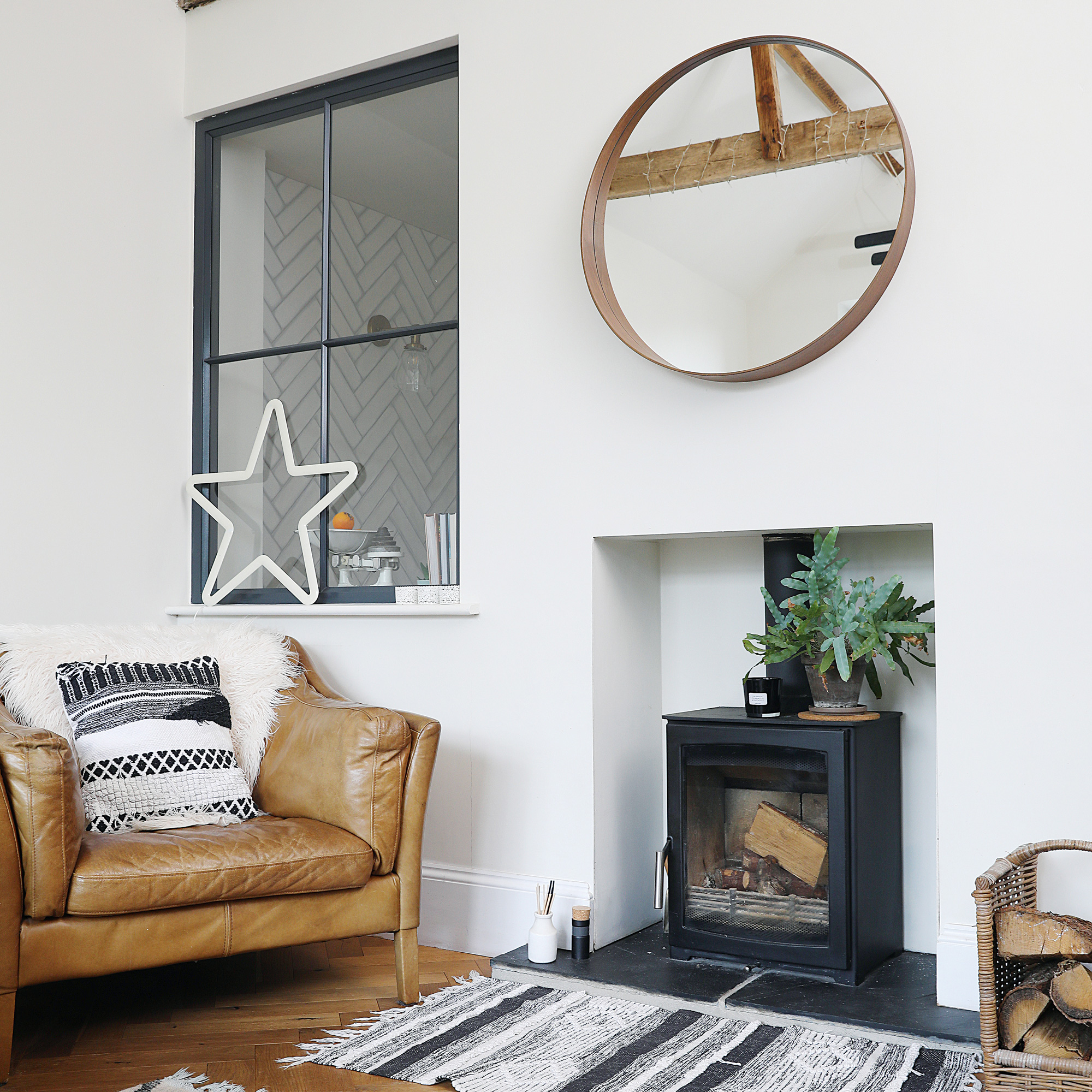
FAQs
Does a wood burning stove heat better than a fireplace?
A wood burning stove will heat a room up better than a fireplace. '80% of the heat generated by a wood burning stove is convected and radiated into the room, compared to only 20% in the case of an open fire,' Phil from Contura explains.
Open fireplaces lose 80% of heat produced via the chimney, meaning the room you're trying to warm up won't receive much benefit. You'll have to burn a lot more wood to produce the same level of heat produced by a stove with much less fuel.
'Two logs of similar characteristics will burn for up to one hour in a wood burning stove, compared to only 15 minutes on an open fire,' Phil says.
What are the disadvantages of a wood burning stove?
Older models of wood burning stoves are less efficient than new designs, which comply with Ecodesign standards. Earlier stoves were capable of producing the same level of emissions as open fires, which basically defeated the point of investing.
'With relatively high emissions associated with old stoves and open fires, coupled with lack of maintenance, bad burning practice and poor-quality fuel choices, stoves have been associated with affecting air quality - but this is not the case with modern stove models,' says Jon Butterworth, Sales Director, Arada Stoves.
One of the drawbacks of wood burning stoves is that they can take a bit of time to get a fire going, if you follow the correct procedure. 'To use a wood burner correctly, you need to warm the stove and chimney chamber through first, rather than trying to create a roaring fire and a lot of heat straight away. It’s better to build the fire up progressively,' says Phil from Contura.
Now you know everything there is to know about a wood burner vs open fire, which will you be going for?

Katie has been writing freelance since early 2022, specialising in all things homes and gardens, following achieving a Masters in Media and Journalism. She started out writing e-commerce content for several of Future’s interior titles, including Real Homes, Gardeningetc, Livingetc, and Homes and Gardens. Since then she’s been a regular contributor on Ideal Home’s digital team, covering news topics, how-to guides, and product reviews.